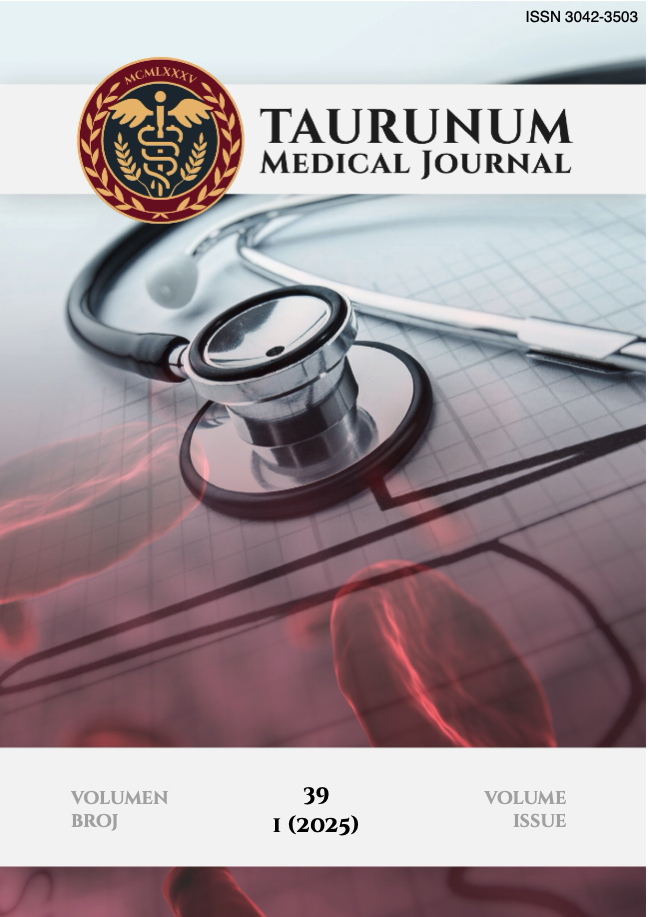Current issue

Volume 39, Issue 1, 2025
Online ISSN: 3042-3511
ISSN: 3042-3503
Volume 39 , Issue 1, (2025)
Published: 31.03.2025.
Open Access
Welcome to Issue 39, No. 1 – the first of our two annual publications for this year. Inside, you'll find a curated selection of articles. Start your year with the essential knowledge and perspectives offered in this timely edition
All issues
Contents
01.04.2018.
Plenary oral presentation
Acrylamide-silent killer?
Aim: The goal was to examine the effects of direct exposure of stomach tissue to acrylamide. Introduction: Acrylamide is a toxic chemical substance discovered in foods rich in starch, prepared at high temperatures. Material and Methods: The research was carried out 6 groups of 5 experimental animals (Wistar rats). Two control groups orally implicated distilled water. Two experimental groups orally administrated PLENARNE USMENE PREZENTACIJE 21 MATERIA MEDICA • Vol. 34 • Issue 1, suplement 1 • april 2018. acrylamide in a daily dose of 25 mg/kg, and two dose of 50 mg/kg. Three groups were sacrificed after 24h and three after 72h, On histological gastric tissue material is applied qualitative and semi-quantitative histological analysis, stereological measurements of individual compartments of the stomach wall, linear measuring the number of mast cells in the mucosa and submucosa. Results: Slight damage of the surface epithelium, accompanying mild inflammatory reaction and degranulation of mast cells are results of histological damages in the stomach tissue. Reconstruction of the epithelium follows directly toxic effect on epithelium, and it is confirmed by the presence of immature form of mucoproductive cells. Examined inflammatory and degenerative parameters show a positive correlation with respect to dose and/or a time of exposition to acrylamide. Conclusion: Understanding the mechanism of action of acrylamide allows to apply adequate prevention and make an appropriate choice of therapeutic methods.
Jelena Ilic Sabo, Djolai Matilda, Jelena Amidzic, Aleksandra Levakov Fejsa
01.04.2018.
Poster session
Metastasis of Melanoma to Uterine Leiomyoma
Aim: To highlight the widespread metastatic potential of the cutaneous melanoma, as well as its tendency for unusual presentation of metastatic disease. Introduction: Melanoma is an aggressive, highly malignant disease that is derived from melanocytes. The incidence of melanoma is significantly increasing. Melanoma has a strong tendency for metastasis. After primary excision of tumour, about 30% of all patients shall develop distant metastasis within first 5 years after tumour diagnosis. Case report: A 48-year-old female patient had undergone a hysterectomy because of myomatous uterus. After pathohistological examination metastasis of melanoma was diagnosed in one of multiple leimyoma. Diagnosis was confirmed with positive immunohistochemical staining with MART1 and S100 protein. Insight into the medical records, revealed that patient was diagnosed with superficially spreading melanoma (Clark IV, Breslow III) on skin above her left breast, as well as 2 regional tumour-involved lymph nodes (pT3aN2bM0), 2 years prior to this hysterectomy. Uterine leiomyoma was the first diagnosed distant metastasis of cutaneous melanoma. Diagnosis of stadium IV melanoma was established. Conclusion: Melanoma is a particularly aggressive disease with unpredictable evolution, so the occurrence of metastases in unusual and unexpected localizations, as is the distant benign tumour in the presented case, shall probably happen more often in the future.
Jelena Amidzic, Nada Vuckovic, Aleksandra Fejsa Levakov, Nenad Solajic, Matilda Djolai, Jelena Ilic Sabo, Milan Popovic



